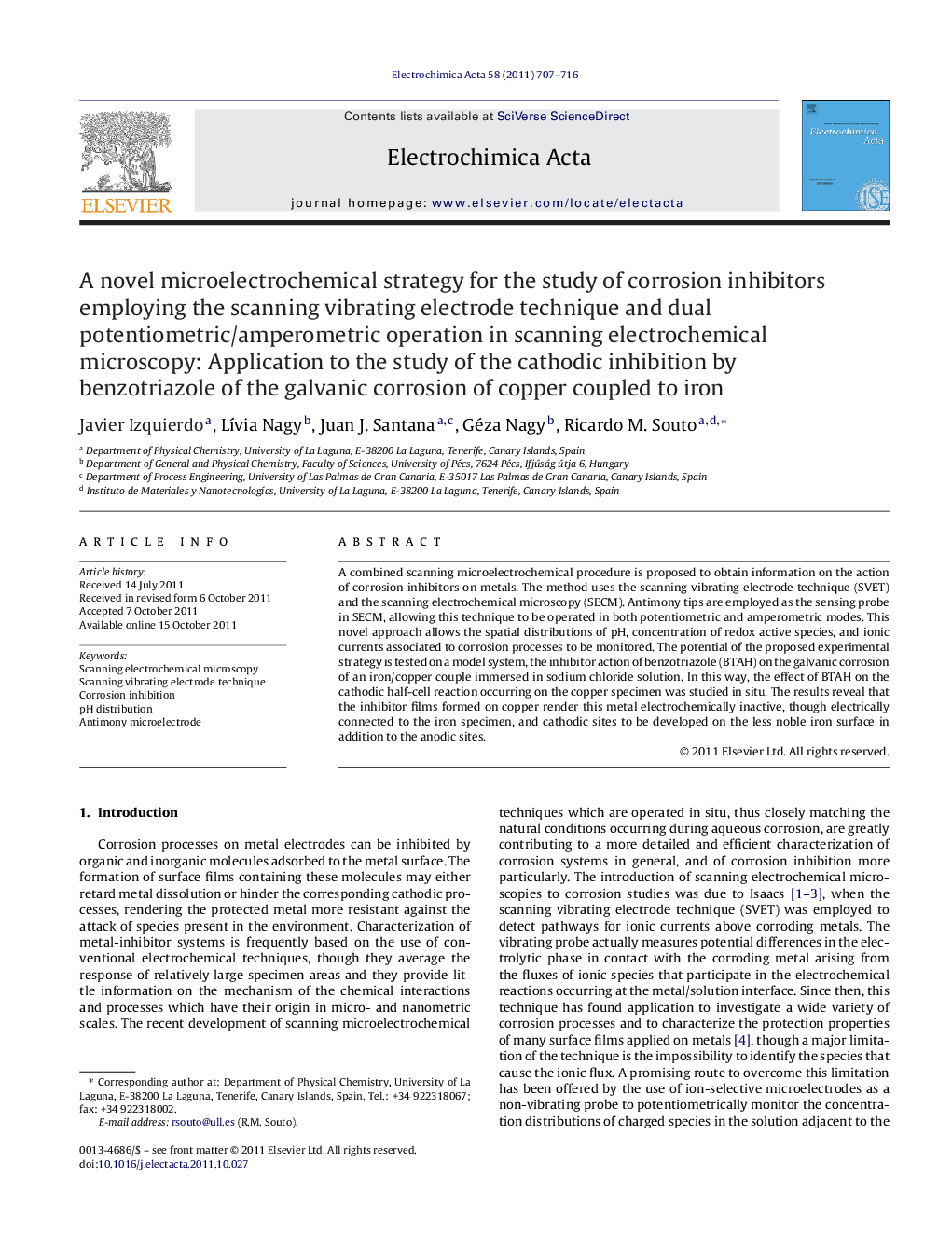| Article ID | Journal | Published Year | Pages | File Type |
|---|---|---|---|---|
| 189776 | Electrochimica Acta | 2011 | 10 Pages |
A combined scanning microelectrochemical procedure is proposed to obtain information on the action of corrosion inhibitors on metals. The method uses the scanning vibrating electrode technique (SVET) and the scanning electrochemical microscopy (SECM). Antimony tips are employed as the sensing probe in SECM, allowing this technique to be operated in both potentiometric and amperometric modes. This novel approach allows the spatial distributions of pH, concentration of redox active species, and ionic currents associated to corrosion processes to be monitored. The potential of the proposed experimental strategy is tested on a model system, the inhibitor action of benzotriazole (BTAH) on the galvanic corrosion of an iron/copper couple immersed in sodium chloride solution. In this way, the effect of BTAH on the cathodic half-cell reaction occurring on the copper specimen was studied in situ. The results reveal that the inhibitor films formed on copper render this metal electrochemically inactive, though electrically connected to the iron specimen, and cathodic sites to be developed on the less noble iron surface in addition to the anodic sites.
Graphical abstractFigure optionsDownload full-size imageDownload as PowerPoint slideHighlights► Combined scanning microelectrochemical procedure for the study of corrosion inhibition on metals. ► The method uses SVET, and SECM operated in both potentiometric and amperometric modes. ► Spatial distributions of pH, concentration of redox species, and ionic currents are monitored. ► Effect of benzotriazole on the cathodic half-cell reaction of Fe–Cu galvanic corrosion is monitored.
